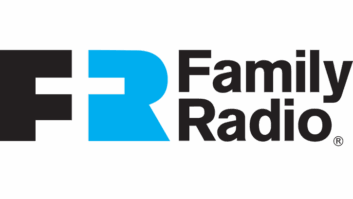 Radio broadcasters in the United States continue to reevaluate capital expenditure budgets amid the COVID-19 pandemic. Cap-ex spending drew down drastically in the first half of this year, according to financial reports from several major commercial broadcast groups.
Radio broadcasters in the United States continue to reevaluate capital expenditure budgets amid the COVID-19 pandemic. Cap-ex spending drew down drastically in the first half of this year, according to financial reports from several major commercial broadcast groups.
Expense management has become crucial during the economic downturn caused by the virus, according to industry observers. The impact of the crisis on the radio technology marketplace has been severe, they say; and although equipment manufacturers and vendors expressed some optimism in early summer that spending on equipment and projects would bounce back later in the year, the upbeat signs seemed to have dampened as summer wore on.
Revenue Shrinkage
Several former engineering executives said broadcasters are being forced to question and justify each line item in their budgets, from the bottom up, as their employers seek to mitigate the economic impact of COVID-19. Most groups froze capital expenditures or at least prioritized critical projects that needed funding.
iHeartMedia, owner of more than 850 radio stations in 160 markets, among its many other platforms, announced in April it would reduce cap-ex by an expected $80 million for the rest of 2020. As of May, when it reported first quarter earnings, the company was projecting capital expenditures of $75 million to $95 million this year.
Meanwhile, Entercom Communications, owner of approximately 230 stations, said it would trim cap-ex by over 40% due to the pandemic “to a revised range of between $25–$30 million for 2020,” according to an April filing with the U.S. Securities and Exchange Commission.
The broadcasters contacted by Radio World were reluctant to discuss current spending plans, but it is clear that broadcasters had taken drastic measures since March, to hold onto cash where necessary.
“These companies are facing severe revenue shrinkage, which means they are being forced to conserve cash. It’s not clear when spending might resume,” said one person connected with the industry. “The economic crisis caused by the pandemic is driving all business decisions.”
Signs of spending cuts are quite evident in public filings by broadcasters. Spanish Broadcasting System said it was “limiting capital expenditures” in its first quarter 2020 filing with the SEC. Cost-cutting at Cumulus Media, which owns 424 stations, included a cut of 40% in capital expenditures the remainder of this year, according to a press release from the broadcaster. Townsquare Media, which has 321 radio stations in 67 markets, has “reduced all planned capital expenditures,” according to a statement from CEO Bill Wilson.
[Related: “Cumulus Will Sell Its Towers to Vertical Bridge”]
“Pared to the Bone”
Former engineering executive Milford Smith, now principal with Smith, Khanna and Guil Inc., said broadcast groups are likely focusing on “compliance issues” and any truly critical projects.
“Close behind are any projects or issues involving reliability — on air or online. This includes PPM systems, transmission systems and interconnection systems. Beyond these core items, most everything else can be considered optional.”
Smith said that “an old automation system and console that has been growing whiskers” will likely have to make it through another year before being replaced.
Equally concerning are the seemingly endless rounds of staff reductions, Smith said.
“Many stations and companies have pared staff to the bone. They are severely short-staffed. A multi-station cluster in a competitive market can only be expected to operate reliably and effectively with adequate technical expertise,” Smith said.
Bert Goldman, president of Goldman Engineering Management, said radio businesses have been hit hard.
“Loss of revenue has impacted all facets of station operations. And there is a drastic change in technical priorities as staff is moved off-premises and as many operations as possible go remote,” Goldman said.
Broadcasters were smart to freeze non-critical spending, both operating and capital, until the long-term situation is clearer, Goldman said.
“Specifically, until the impact to the business is determined, all capital spending, unless a project was actively in progress and could not be stopped, would probably be frozen. Any capital funds unspent would likely be immediately reallocated to emergency capital costs associated with pandemic response, such as updating playout systems, computers for home operation and remote equipment. Operationally, internet access would likely need upgrading at staff homes,” he said.
Goldman said many broadcasters had to move fast to replace older, less-flexible on-air playout systems so that operations could continue remotely.
“It is likely that emergency capital was spent during the crisis, which will impact available capital moving forward,” he said.
Gary Kline, a technical broadcast consultant and former DOE at Cumulus, said it can be hard for managers to find a consensus on which projects are critical versus those that can be paused.
“A DOE is almost surely to be inundated with feedback from the markets disagreeing with their decisions. What an engineering manager thinks is not mission-critical may be seen by the local market as critical,” he said. “And as the cap-ex budget contracts, the tougher the decisions are.”
Kline said good communication between executive leadership and the director of engineering are important. While senior leaders must provide engineering with updated guidelines for spending and how to prioritize, a DOE should be able to give management his or her feedback; the discussion should be collaborative and ongoing.
“Unpredictable”
Equipment suppliers are being realistic about the situation, said Bob Cauthen, president of equipment vendor SCMS Inc.
“Budgets and projects have definitely been cut and postponed. Some projects have been totally cancelled. I think all broadcast dealers and manufacturers have felt the pinch during the second quarter,” Cauthen said this summer. “It has been felt across the board in small, medium and major markets.”
Cauthen said trying to predict when things return to normal is like trying to figure out when the COVID-19 pandemic will end.
“It truly is unpredictable at this point, with all the variables. My personal guess is it will gradually improve, and broadcast will have a good fourth quarter, especially with political ad income peaking,” he said.
The pandemic has caused something of a business boom for companies selling remote broadcasting equipment.
“I suspect that Comrex is one of the few broadcast equipment manufacturers to have not been adversely affected by the pandemic,” said Chris Crump, senior director of sales and marketing at that company. “We had some logistical challenges in March and April as we tried to come to grips with the effects of COVID-19 and how best to keep our employees and their families safe. All the while, we had to find a way to increase our production output to keep up with orders.”
Crump said there are still a lot of unknowns regarding parts supplies, which have been exacerbated by major shipping carriers that no longer guarantee delivery times.
“Luckily our team has been able to work around extended parts lead times caused by this global crisis so we can meet our shipping requirements,” he said.
Comment on this or any story. Email [email protected] with “Letter to the Editor” in the subject field.
Keep up with technology trends in radio with Radio World’s library of free ebooks. Recent topics include trends in codecs and STLs; broadcasting from home; how to ensure RF readiness for your air chain; and how artificial intelligence is showing up in radio technology. Read them here.







